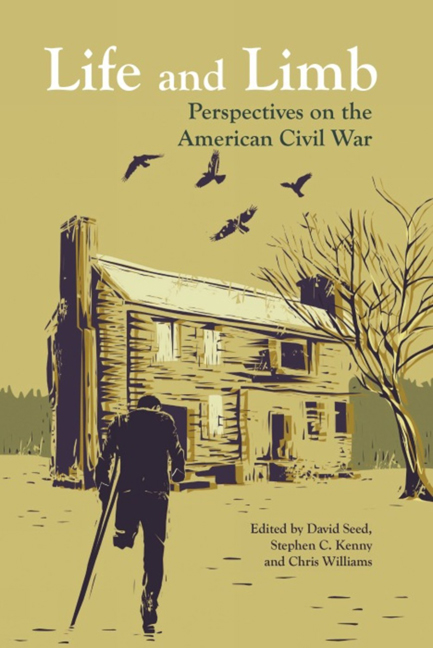Book contents
- Frontmatter
- Contents
- List of Illustrations
- Acknowledgements
- Introduction: Civil War Voices and Views
- MEDICAL AND SURGICAL MEMOIRS
- ACCOUNTS OF NURSING
- MEDICAL FACILITIES AND PATHOLOGY
- PHOTOGRAPHY
- AMPUTATIONS AND PROSTHETIC LIMBS
- IN THE FIELD OF BATTLE
- POST-WAR NARRATIVES
- ‘What I Saw of Shiloh’
- ‘The Coup de Grace’
- ‘A Resumed Identity’
- ‘Recollections of a Private’
- The Red Badge of Courage
- The Aftermath
- Contributors
- Select Bibliography
- Index
- Plates
The Aftermath
from POST-WAR NARRATIVES
- Frontmatter
- Contents
- List of Illustrations
- Acknowledgements
- Introduction: Civil War Voices and Views
- MEDICAL AND SURGICAL MEMOIRS
- ACCOUNTS OF NURSING
- MEDICAL FACILITIES AND PATHOLOGY
- PHOTOGRAPHY
- AMPUTATIONS AND PROSTHETIC LIMBS
- IN THE FIELD OF BATTLE
- POST-WAR NARRATIVES
- ‘What I Saw of Shiloh’
- ‘The Coup de Grace’
- ‘A Resumed Identity’
- ‘Recollections of a Private’
- The Red Badge of Courage
- The Aftermath
- Contributors
- Select Bibliography
- Index
- Plates
Summary
The one undeniable truth of the American Civil War is its destruction: the appalling damage that it caused to humans, animals, and environments, to bodies, minds, relationships, families, communities, and cultures – a legacy of chaos and unmaking lasting for decades in the conflict's aftermath. All else is grist for endless debate and other volumes.
Military studies have discussed – and still do discuss – the Civil War in terms of campaigns, leadership, technological advancements, and tactical innovations. The invaluable Library of Congress Civil War Desk Reference (2002) has all of those steely facts for those who seek them, with sections devoted to ‘Battles and the Battlefield,’ ‘The Armies,’ and ‘Weaponry.’ Social and cultural studies, by comparison, tend to emphasise the damage, turmoil, and suffering that the war's killing machines and deadly manoeuvres wrought. In Living Hell: The Dark Side of the Civil War (2014), for example, Michael C.C. Adams presents an antidote to ‘romantic notions of dramatic exploits on the battlefield’ by re-enacting eyewitness accounts of ‘the vicious nature of combat, the terrible infliction of physical and mental wounds, the misery of soldiers living amid corpses, filth and flies […] [And, importantly too] the many civilians who endured loss, deprivation, and violations.’
The most recent scholarship on the medical dimensions of the war has drawn attention to the human health impact and the massive stimulus the conflict gave to professional medicine. In Learning from Wounded: The Civil War and the Rise of American Medical Science (2014), Shauna Devine counters the traditional view of medical practice in the conflict as being near medieval, exploring the making of scientific knowledge and drawing on institutional resources, including the US Army Medical Museum and the Medical and Surgical History of the War of Rebellion. Devine's research finds abundant evidence of progress and modernisation in the medical response to the war's human slaughter. Before the war, for example, Northern medical schools complained of shortages in the human materials necessary to undertake anatomical education and research. Bloodbaths such as Antietam, Gettysburg, and Shiloh created a surplus of bodies in an instant. Across the various theatres of war, in response to Surgeon General William Hammond's Circular No. 2, doctors harvested the dead.
- Type
- Chapter
- Information
- Life and LimbPerspectives on the American Civil War, pp. 188 - 192Publisher: Liverpool University PressPrint publication year: 2015



